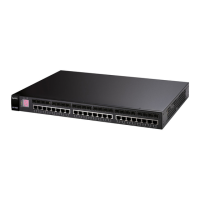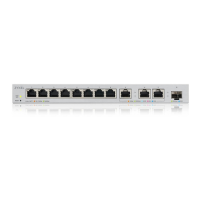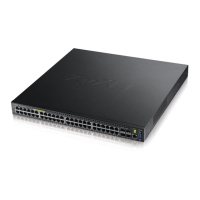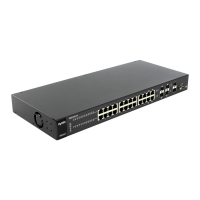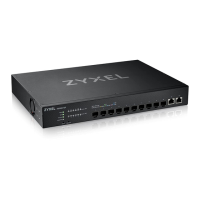Chapter 59 VLAN Stacking
XGS2220 Series User’s Guide
401
59.5 Port-Based Q-in-Q
Port-based Q-in-Q lets the Switch treat all frames received on the same port as the same VLAN flows
and add the same outer VLAN tag to them, even if they have different customer VLAN IDs.
Click SWITCHING > VLAN Stacking > Port-Based QinQ to display the screen as shown.
Figure 298 SWITCHING > VLAN Stacking > Port-Based QinQ
Tunnel TPID
(HEX)
TPID is a standard Ethernet type code identifying the frame and indicates whether the frame
carries IEEE 802.1Q tag information. Enter a four-digit hexadecimal number from 0000 to FFFF that
the Switch adds in the outer VLAN tag of the frames sent on the tunnel ports. The Switch also uses
this to check if the received frames are double-tagged.
The value of this field is 0x8100 as defined in IEEE 802.1Q. It is used to identify the customer tag of an
incoming frame. If the Switch needs to communicate with other vendors’ devices, they should use
the same TPID.
Note: You can define up to four different tunnel TPIDs (including 8100) in this screen at a
time.
Apply Click Apply to save your changes to the Switch’s run-time memory. The Switch loses these changes
if it is turned off or loses power, so use the Save link on the top navigation panel to save your
changes to the non-volatile memory when you are done configuring.
Cancel Click Cancel to begin configuring this screen afresh.
Table 222 SWITCHING > VLAN Stacking > VLAN Stacking (continued)
LABEL DESCRIPTION
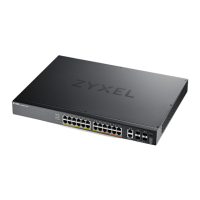
